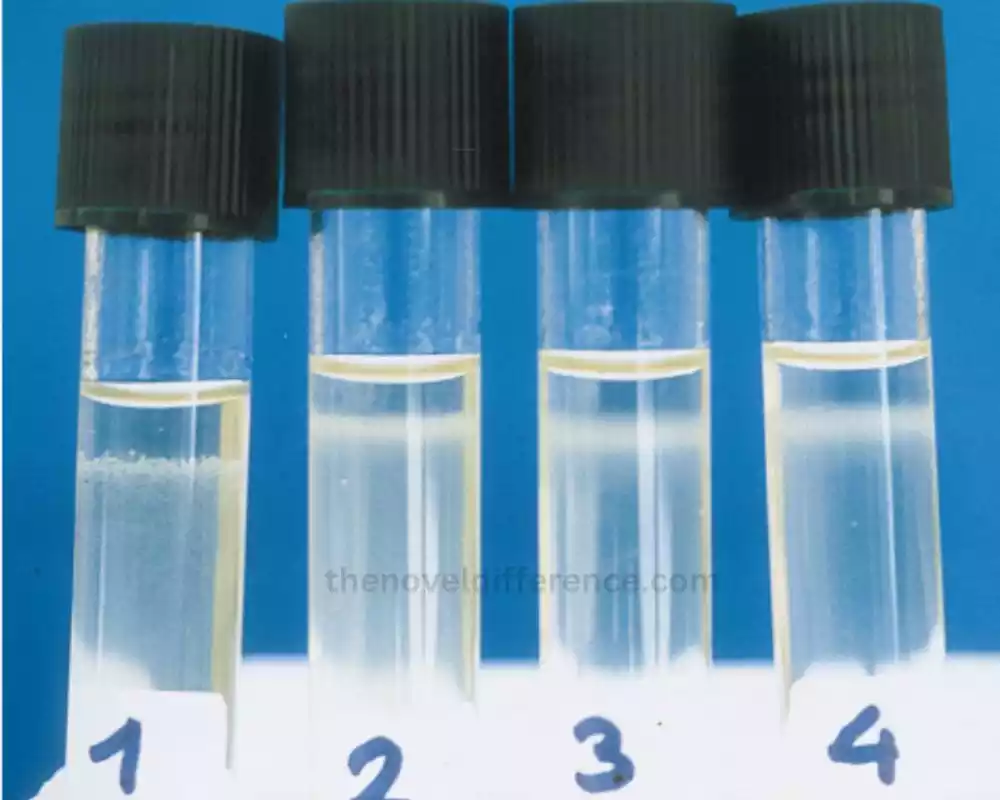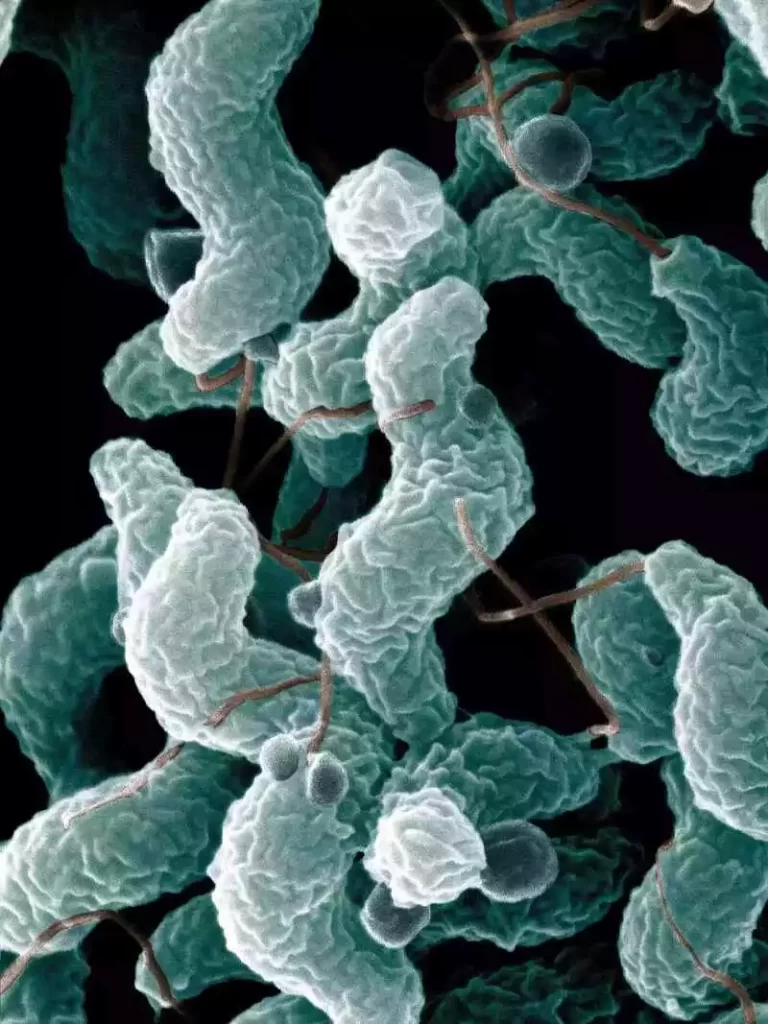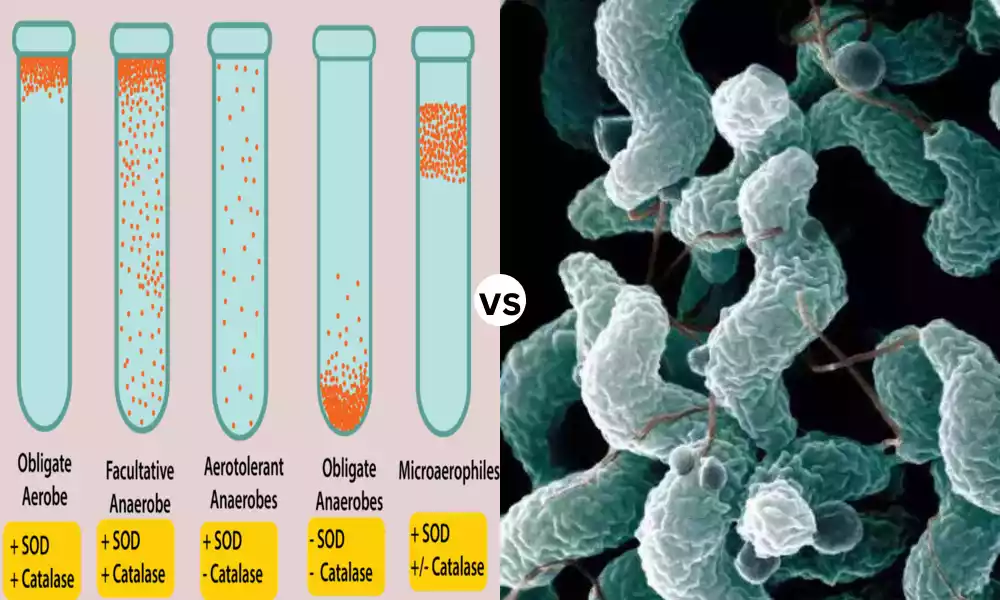The captivating contrast between microaerophilic and capnophilic microorganisms lies in their unique preferences: microaerophiles thrive in oxygen-starved environments, whereas capnophiles flourish in the company of elevated carbon dioxide concentrations.
In the mesmerizing world of microorganisms, various creatures showcase their distinct atmospheric demands, forming a spectrum of requirements that dictate their existence. Among these fascinating categories are obligate aerobes, obligate anaerobes, facultative anaerobes, aerotolerant organisms, microaerophiles, and capnophiles. Obligate aerobes breathe the essence of oxygen for life, while obligate anaerobes shun it entirely. Microaerophilic beings dance gracefully within the realm of minimal oxygen, while capnophilic organisms find their muse in the embrace of abundant carbon dioxide, shaping a symphony of microbial life.
What is Microaerophilic?
Microaerophilic microorganisms are a fascinating category of microbes that exhibit specific oxygen requirements for their growth and survival. The term “microaerophilic” signifies their preference for environments with reduced oxygen levels compared to atmospheric conditions. While they require oxygen to respire and generate energy, they thrive in conditions where the oxygen concentration is below that of the surrounding air.
Key characteristics of microaerophilic microorganisms include:
- Optimal Oxygen Levels: Microaerophiles grow best when exposed to oxygen concentrations lower than those in the atmosphere (typically around 21% oxygen). They have adapted to utilize oxygen for respiration but are sensitive to higher oxygen levels.
- Oxygen Tolerance: While they depend on oxygen, microaerophiles are unable to thrive under atmospheric oxygen levels. Prolonged exposure to higher oxygen concentrations can be detrimental to their growth and survival.
- Habitats: These microorganisms are often found in environments where oxygen levels are moderated, such as certain areas of soil, water bodies, and the gastrointestinal tracts of animals.
- Examples: Some well-known microaerophiles include Helicobacter pylori, which resides in the stomach lining, and Campylobacter species, often found in the intestinal tracts of animals.

Microaerophiles represent a remarkable adaptation in the world of microorganisms, allowing them to carve out ecological niches in environments where oxygen is present but not in abundance. Their specialized oxygen requirements contribute to their unique roles in various ecosystems and their significance in fields such as microbiology and medical research.
Growth conditions and culturing techniques of Microaerophilic
The growth conditions and culturing techniques for microaerophilic microorganisms are designed to provide an environment with reduced oxygen levels, allowing these organisms to thrive while minimizing the inhibitory effects of higher oxygen concentrations.
Here are some key considerations for culturing microaerophiles:
1. Controlled Oxygen Levels:
- Use specialized incubation systems that can precisely control oxygen levels. These systems often include gas mixtures with reduced oxygen and increased carbon dioxide, creating a microaerophilic environment.
- Alternatively, anaerobic chambers or jars with gas-generating sachets can be employed to create controlled atmospheres with lower oxygen levels.
2. Temperature:
- Maintain the appropriate temperature for the specific microaerophile you are culturing, typically within a range suitable for mesophilic or thermophilic growth.
3. Carbon Dioxide (CO2):
- While microaerophiles primarily require reduced oxygen levels, some may benefit from increased carbon dioxide concentrations. Ensure that the CO2 levels are adjusted to meet the needs of the microorganism in question.
4. Nutrient Media:
- Select a culture medium that is appropriate for the microaerophile’s nutritional requirements. This may include specialized media for particular species.
- The medium should be prepared with care, ensuring that it is free from oxygen contamination.
5. Airtight Seal:
- Ensure that all containers and growth vessels are tightly sealed to maintain a controlled atmosphere. This prevents oxygen from entering the culture.
6. Agitation:
- Gentle agitation of cultures is sometimes necessary to distribute oxygen and nutrients evenly throughout the medium without introducing excess oxygen.
7. Monitoring:
- Regularly monitor and adjust the oxygen and carbon dioxide levels, as well as temperature, to maintain the desired growth conditions.
8. Sealing Techniques:
- When working in an anaerobic chamber or using specialized gas-generating systems, employ effective sealing techniques to prevent leaks and maintain the desired conditions.
9. Growth Assessment:
- Assess growth by observing characteristic colony morphology or conducting specific tests to confirm the presence of the microaerophile.
It’s important to note that the specific requirements for culturing microaerophilic microorganisms may vary among different species. Therefore, a thorough understanding of the particular microaerophile’s needs and the use of appropriate techniques and equipment are essential for successful cultivation.
What is Capnophilic?
Capnophilic microorganisms are a distinctive group of microbes that have a particular affinity for, and often require, elevated carbon dioxide (CO2) levels for their growth and metabolic processes. The term “capnophilic” is derived from the Greek word “kapnos,” which means “smoke,” reflecting the historical association of elevated CO2 levels with combustion and smoke.
Key characteristics and facts about capnophilic microorganisms include:
- Carbon Dioxide Requirement: Capnophiles typically require carbon dioxide concentrations above the atmospheric level (which is about 0.04% CO2) for optimal growth. Some may thrive in environments with CO2 levels as high as 10%.
- Oxygen Tolerance: While they depend on elevated CO2 levels, capnophilic microorganisms can tolerate a range of oxygen concentrations, including atmospheric oxygen levels.
- Habitats: Capnophiles are commonly found in environments rich in CO2, such as the gastrointestinal tracts of animals, where microbial fermentation generates CO2.
- Clinical Significance: Some capnophilic bacteria are of clinical significance and are associated with infections in the human body, particularly in parts of the digestive system.
- Microbiology and Research: Understanding capnophilic microorganisms is important in microbiology and medical research, as they represent a unique ecological niche with specialized requirements.
- Culture Conditions: To culture capnophilic microorganisms, specialized incubation systems with controlled CO2 levels are used to create environments rich in carbon dioxide. These systems can range from simple CO2 incubators to more sophisticated gas control chambers.
- Examples: Examples of capnophilic microorganisms include Campylobacter species, which are often responsible for gastrointestinal infections, and some types of Streptococcus and Haemophilus bacteria.

Capnophilic microorganisms have evolved to thrive in environments where carbon dioxide is produced, allowing them to occupy specific niches in various ecosystems, including the human body. Understanding their growth requirements and physiology is essential for both clinical diagnostics and microbiological research.
Growth conditions and culturing techniques of Capnophilic
Culturing capnophilic microorganisms requires creating an environment with elevated carbon dioxide (CO2) concentrations to meet their specific growth needs.
Here are the growth conditions and culturing techniques for capnophilic bacteria:
1. Specialized Incubators:
- Use a specialized incubator equipped with a controlled atmosphere to maintain the desired carbon dioxide levels. Capnophilic incubators are designed to provide a controlled environment with elevated CO2.
2. Carbon Dioxide Sources:
- Introduce a source of carbon dioxide into the incubator environment. Common sources include:
- Carbon dioxide gas cylinders or tanks: These are used to precisely control CO2 concentrations.
- Sodium bicarbonate (NaHCO3) or sodium carbonate (Na2CO3) tablets: These can be added to the culture vessels to release CO2 as they dissolve.
- Capnophilic pouches or containers: These are available for creating a CO2-enriched atmosphere in a closed system.
3. Temperature and Other Conditions:
- Maintain the appropriate temperature for the growth of the specific capnophilic microorganism you are culturing. In most cases, this temperature falls within the mesophilic range (20-45°C).
- Ensure other growth conditions, such as pH and nutrient requirements, are met based on the needs of the particular capnophile.
4. Culture Media:
- Select a suitable culture medium that matches the nutritional requirements of the capnophilic microorganism you are culturing. Specialized media may be required for specific species.
5. Airtight Sealing:
- Ensure that all culture vessels and incubation chambers are airtight to maintain the elevated CO2 levels while preventing contamination from atmospheric air.
6. Monitoring:
- Regularly monitor the CO2 levels within the incubator or culture vessels to ensure that they remain within the desired range. Adjust the carbon dioxide supply as needed.
7. Safety Precautions:
- When handling compressed CO2 gas, take appropriate safety precautions, including securing gas cylinders and using them in well-ventilated areas.
8. Sterile Techniques:
- Follow sterile techniques when preparing culture media and transferring microorganisms to prevent contamination.
9. Assessment of Growth:
- Assess growth by observing characteristic colony morphology or conducting specific tests to confirm the presence of the capnophilic microorganism.
Culturing capnophilic microorganisms can be more challenging than culturing organisms with less specialized requirements. However, the use of specialized incubators and a controlled carbon dioxide atmosphere allows researchers to mimic the conditions necessary for the growth of these unique microbes. Understanding the specific growth conditions of capnophilic microorganisms is vital for both research and clinical applications.
key comparison chart
Here’s a key comparison chart highlighting the similarities and differences between Microaerophilic and Capnophilic microorganisms:
| Characteristic | Microaerophilic | Capnophilic |
|---|---|---|
| Gas Requirement | Reduced oxygen levels for growth and survival | Elevated carbon dioxide levels for growth and survival |
| Controlled Atmosphere | Requires reduced oxygen levels in the culture environment | Requires elevated carbon dioxide levels in the culture environment |
| Ecological Niche | Often found in environments with moderate oxygen levels, such as waterlogged soil and the gastrointestinal tracts of animals | Thrives in environments with elevated carbon dioxide concentrations, like the human gastrointestinal tract |
| Adaptations to Niche | Evolved to compete effectively in environments with reduced oxygen, reducing competition from other microorganisms | Specialized to flourish in carbon dioxide-rich niches, gaining a competitive edge in specific ecosystems |
| Significance in Research | Essential for microbiological research and diagnostics due to their unique growth requirements | Significant in microbiology and medical research, with applications in the study of the human microbiome and infectious diseases |
This comparison chart illustrates the key similarities and differences between Microaerophilic and Capnophilic microorganisms, highlighting their gas-dependent growth requirements, ecological niches, and significance in scientific research and clinical contexts.
Importance of understanding their differences
Recognizing the distinctions between microaerophilic and capnophilic microorganisms holds great significance for several compelling reasons:
- Environmental Conditions Enigma: By delving into their divergent needs for oxygen and carbon dioxide, we unravel the key to creating ideal growth environments in laboratory settings. This understanding ensures that the precise atmospheric conditions are tailored to support their flourishing while safeguarding against the potential perils of inadequate oxygen or carbon dioxide levels.
- Cultivation Quest: When it comes to culturing and isolating these enigmatic organisms from clinical or environmental samples, the journey becomes an intricate puzzle. To successfully cultivate these microaerophiles and capnophiles, we must wield different techniques, curate specific incubation conditions, and craft media compositions that speak to their unique tastes. This craft is essential for their proper identification and subsequent in-depth exploration.
- Disease Detectives: Within the realm of microaerophilic and capnophilic bacteria lies a cohort of potential culprits—pathogens that can orchestrate a symphony of infectious diseases. Distinguishing between these two groups of organisms is akin to wielding the sharpest detective’s magnifying glass. It empowers healthcare professionals with the ability to choose the most fitting laboratory methods and diagnostic tests, thereby enhancing the precision of disease diagnosis and the tailoring of treatment protocols.
- Research Revolution: Understanding the peculiar adaptations and physiological intricacies of these enigmatic organisms opens the door to an exciting era of research. It allows us to embark on a scientific odyssey, studying their biology, unraveling their pathogenic prowess, and deciphering their intricate dance with the environment. Armed with this knowledge, we pave the way for the development of precisely targeted antimicrobial therapies and interventions that promise to outmaneuver these elusive microorganisms.
In a world where mysteries abound at the microscopic level, comprehending the differences between microaerophilic and capnophilic organisms isn’t just an intellectual pursuit—it’s a practical necessity. It unlocks the doors to optimal growth conditions, accurate disease diagnosis, cutting-edge research, and the development of tailored treatments that can tip the scales in our favor in the ongoing battle against these intriguing microorganisms.
Similarities of Microaerophilic and Capnophilic
Microaerophilic and capnophilic microorganisms share some similarities, mainly related to their specialized requirements for specific gases, although the gases in question differ.
Here are some commonalities between these two categories of microbes:
- Gas-Dependent Growth: Both microaerophilic and capnophilic microorganisms exhibit growth preferences that depend on the levels of certain gases in their environment. Microaerophiles thrive under reduced oxygen levels, while capnophiles require elevated carbon dioxide levels for optimal growth.
- Controlled Atmosphere: To culture these microbes, researchers use specialized incubation systems or chambers to create controlled atmospheric conditions. These systems ensure that the desired gas concentrations (reduced oxygen for microaerophiles and elevated carbon dioxide for capnophiles) are maintained.
- Specific Ecological Niches: Both microaerophilic and capnophilic microorganisms occupy specific ecological niches where their gas-dependent growth requirements are met. For example, microaerophiles are often found in environments with moderate oxygen levels, such as in waterlogged soil or the gastrointestinal tracts of animals. Capnophiles, on the other hand, thrive in environments rich in carbon dioxide, like the human gastrointestinal tract.
- Adaptations to Unique Environments: These microorganisms have evolved to thrive in their respective niches, which offer a competitive advantage by reducing competition from other microorganisms with different gas requirements.
- Significance in Research: Understanding the growth conditions and physiology of both microaerophilic and capnophilic microorganisms is vital for microbiological research and clinical diagnostics. Researchers and healthcare professionals can utilize this knowledge to cultivate and identify these organisms in various contexts.
While microaerophilic and capnophilic microorganisms differ in their specific gas requirements (oxygen for microaerophiles and carbon dioxide for capnophiles), they both exemplify the remarkable adaptability of microorganisms to a wide range of ecological niches and their ability to thrive in specialized environments with specific gas compositions.
Conclusion
The differences between microaerophilic and capnophilic bacteria lie in their preferred atmospheric conditions, oxygen and carbon dioxide requirements, habitats, growth characteristics, and metabolic pathways. These dissimilarities highlight the remarkable adaptability of bacteria to diverse environments. By understanding these distinctions, scientists can gain valuable insights into the unique adaptations and survival strategies employed by microaerophilic and capnophilic bacteria.
Next time you encounter the terms “microaerophilic” and “capnophilic,” remember the intriguing differences that define these two groups of bacteria. Their distinct atmospheric preferences provide us with a glimpse into the fascinating world of microbial adaptations and ecological niches.




